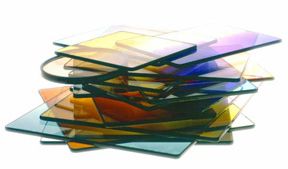
CAMERA F I L T E R S
The more you know about filters, the more you will understand the characteristics of light, and the more you will understand the relationship between the two.

The Filter Gallery takes great satisfaction in helping you to learn about the enormous range of photographic filters and how they can help improve, enhance, and tailor your images.
3 Key Categories
The easiest way to understand the world of filters is to group them by function. Almost every filter falls under one of the following three categories:
Chromatic, Non-Chromatic, and Special Effect.
Simply Put
Chromatic (color) filters are used to change, alter, or balance the color content of light. Chromatic filters include several subgroups all of which affect color in some way or another: color compensating, color conversion, color enhancing, color balancing, and black-&-white contrast effects.
Pink, Purple, Red SunSet
Non-Chromatic filters are used to change or modify the behavior or intensity of light. This group includes polarizers, NDs, UV-absorbing, low contrast, and optical flats.
Special-Effect filters are used to change or modify the physical aspects of the image. This category is quite diverse and includes many intriguing groups: diffusion, mists, frosts, fogs, star effects, streak effects, center clears, diopters, and multi-image attachments.





